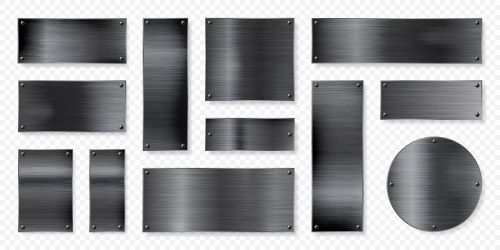As an iron and chromium alloy, stainless steel has excellent corrosion-resistance properties, making it ideal for applications in sterile environments. Examples of these applications include the production of food and beverages, pharmaceutical products, and petrochemicals. Stainless steel falls into the following classes:
Martensitic Stainless Steel
Chromium is the main element present in this class of stainless steel. However, other metals and nonmetals can be introduced to create different types of martensitic stainless steel. These types include:
- Type 410 – a low-cost and general-purpose stainless steel
- Type 414 – contains nickel to improve corrosion resistance
- Type 416 – easily machinable thanks to high phosphorous and sulfur content
Additionally, martensitic stainless steel types 420, 431, and 440 have increasing amounts of chromium and carbon to add strength and corrosion resistance.
Ferritic Stainless Steel
This type of stainless steel not only resists corrosion but also cracking, which makes it a stronger material than martensitic stainless steel. Adding different components to ferritic stainless steel creates different types for unique applications. These types include:
- Type 405 – adds aluminum to prevent hardening when cooling from high temperatures
- Type 409 – has a high chromium percentage and is one of the least expensive types of ferritic stainless steel
- Type 434 – includes molybdenum for better corrosion resistance
Austenitic Stainless Steel
Offering superior corrosion resistance due to high levels of chromium and nickel, austenitic stainless steels are the most popular class. These steels can be hardened by cold working and can be classified by the following grades:
- Standard – has a maximum of .08% chromium
- Low carbon (L grade) – contains a very low amount of carbon to prevent corrosion during the fabrication process
- High carbon (H grade) – is boosted with a high percentage of carbon for extra strength in high-temperature applications
High carbon stainless steels fall into their own sub-types, which include type 304—the most commonly used grade thanks to its impressive strength, corrosion resistance, and fabricability.
Duplex (Ferritic-Austenitic) Stainless Steel
A combination of ferritic and austenitic stainless steels, duplex grades are stronger than both but not as corrosion resistant as austenitic steels. Types of duplex stainless steels include:
- Type 2205 – ideal for high-pressure and highly corrosive environments (and the most commonly used)
- Type 2304 – offers impressive resistance to corrosion and nearly double the strength of austenitic stainless steel grades
- Type 2507 – one of the best performing duplex grades thanks to high amounts of chromium, molybdenum, and nitrogen.
Precipitation-Hardening (PH) Stainless Steel
One of the few classes of stainless steel that can be strengthened and hardened by heat treatment, precipitation-hardening stainless steel is one of the easiest to fabricate. Types of PH stainless steel include:
- Type 17-4 – adds chromium and copper for high-strength and moderate corrosion-resistance applications
- Type 15-5 – offers better performance compared to type 17-4 thanks to the addition of nickel
CNC Plasma Cutting Machines & Other Heavy-Duty Cutting Solutions
Machitech is a leading manufacturer of CNC plasma cutters, waterjet cutters, and other automated cutting equipment for custom fabrication shops. Our solutions are customizable to meet individual production needs and include free and unlimited support for life. To learn more, contact Machitech today.
 English
English  Français
Français 
